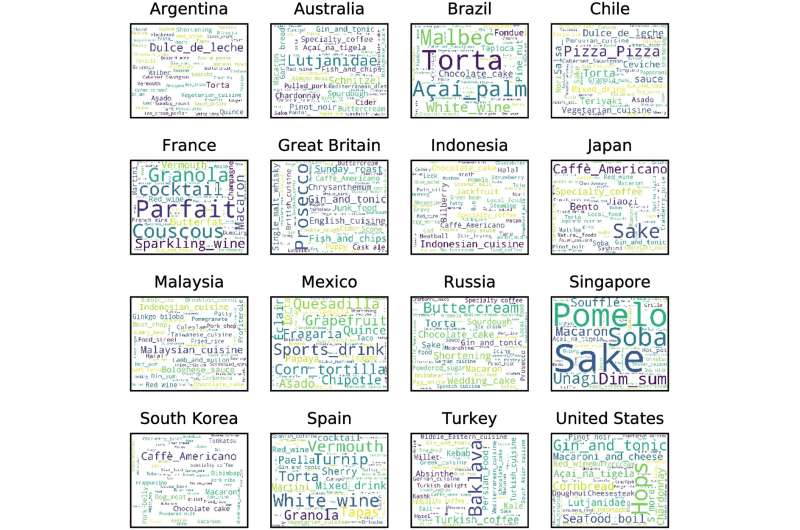Immigration patterns are reflected in Facebook data on popular foods and drinks

Researchers have developed a novel strategy for using Facebook data to measure cultural similarity between countries, revealing associations between immigration patterns and people's food and drink interests. Carolina Vieira of the Max Planck Institute for Demographic Research in Rostock, Germany, and colleagues present these findings in the open-access journal PLOS ONE on February 9, 2022.
Migration may play a key role in shaping cultural similarities between countries. However, its influence is difficult to study, partly due to the challenge of quantifying culture. Typically, researchers have relied on surveys to compare different countries' cultures, but surveys are associated with several difficulties, such as their cost, the possibility of bias in their construction, and the difficulty of applying them to a large number of countries.
To complement survey data, Vieira and colleagues have now developed a new analytical method based on earlier evidence that food and drink preferences may be a proxy for cultural similarities between countries. The new method employs data on the top 50 food and drink preferences for any given country as captured by the Facebook Advertising Platform.
To demonstrate the new method, the researchers applied it to 16 countries, finding that food and drink interests generally reflect immigration patterns. In most countries, including the U.S., preferences for foreign food and drink align with top foods and drinks in the countries from which most immigrants came. Countries with fewer immigrants, such as Indonesia, Japan, Russia, and Turkey, stand apart from the others, showing more idiosyncrasy in their preferences for foreign foods and drinks.
The findings align well with earlier survey data, and they highlight asymmetry between countries; for instance, the top 50 foods and drinks from Mexico are more popular in the U.S. than the top 50 U.S. foods and drinks are in Mexico, reflecting a greater degree of immigration from Mexico to the U.S. than vice versa.
Overall, the researchers say, this study suggests that immigrants indeed help shape the culture of their destination country. Future research could refine the new method outlined in this study or repurpose it to examine and compare other interests beyond food and drink.
The authors add: "We analyze data from Facebook users about their food and drink preferences to measure the cultural similarity between 16 countries. When compared with official migration data, we observe that countries with more immigrants show a higher cultural similarity between the origin and destination countries."
More information: Vieira CC, Lohmann S, Zagheni E, Vaz de Melo POS, Benevenuto F, Ribeiro FN (2022) The interplay of migration and cultural similarity between countries: Evidence from Facebook data on food and drink interests. PLoS ONE 17(2): e0262947. doi.org/10.1371/journal.pone.0262947
Journal information: PLoS ONE
Provided by Public Library of Science





















